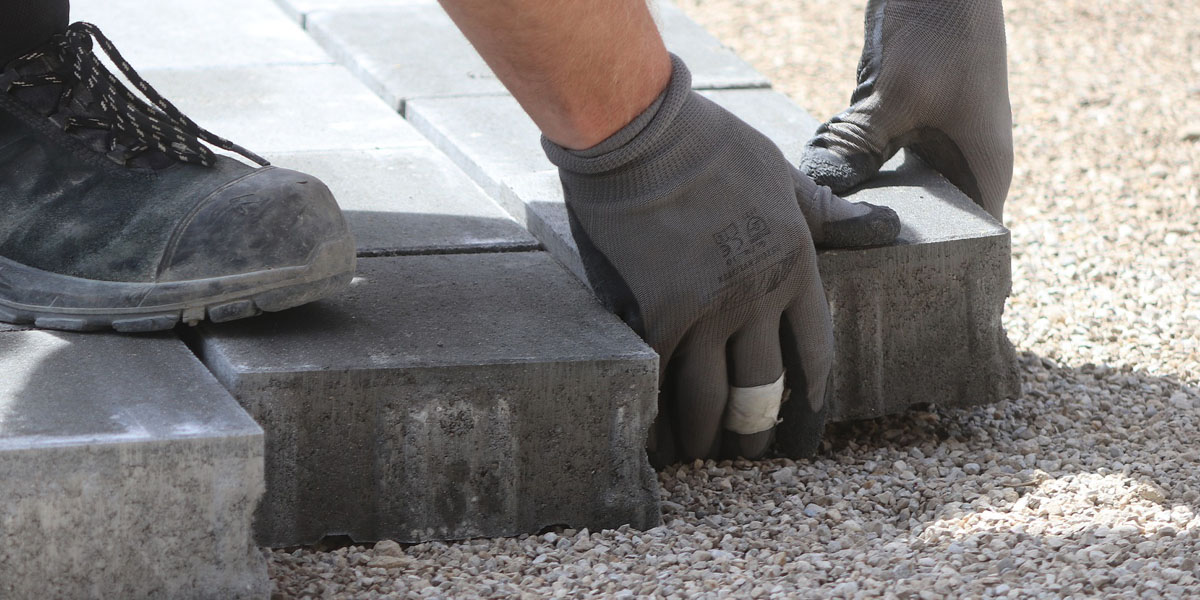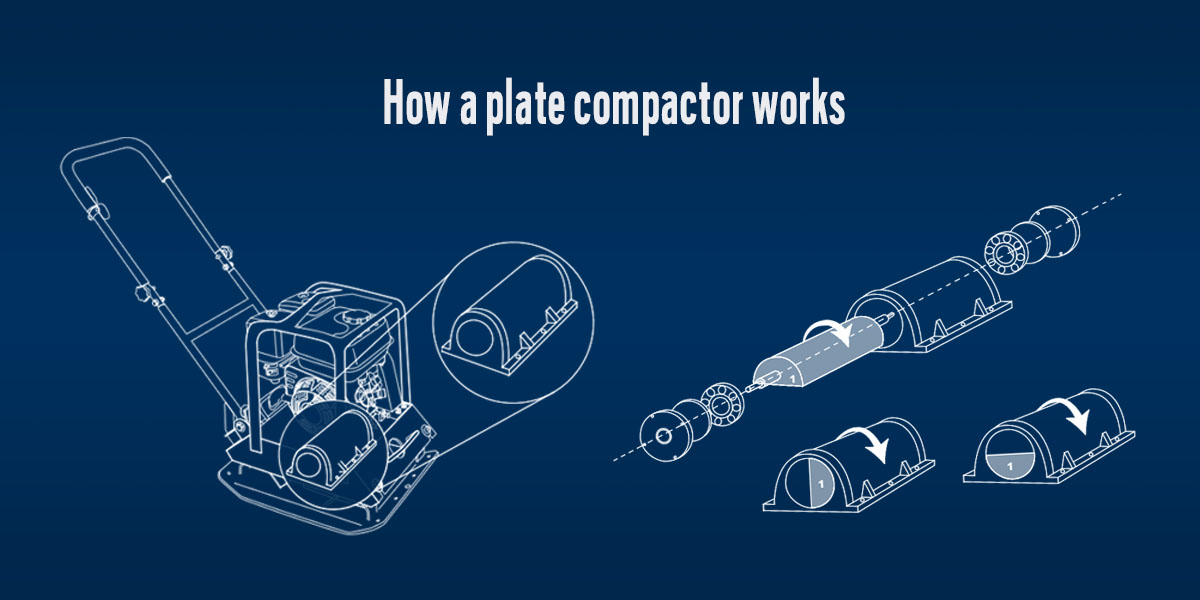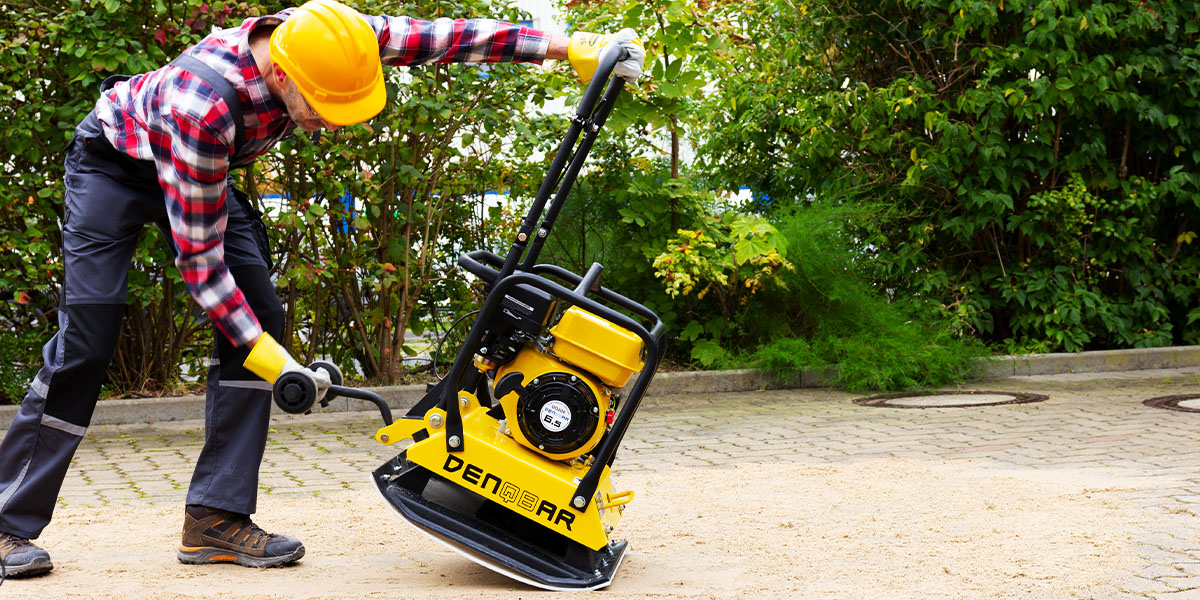Plate compactor - what I need to know

Plate compactor: this guide will help you find the best model for you
From laying paving paths, driveways or patios to gardening and landscaping to demanding track and sewer construction - due to these numerous areas of application, a plate compactor is equally interesting for ambitious DIY enthusiasts, professional landscapers and gardeners as well as service providers in civil engineering. Because wherever something needs to be compacted, there is no way around using a plate compactor.
When selecting a suitable model, you will come across terms such as operating weight, compaction pressure, reversibility or base plate size. All of these factors have a significant influence on the question of which plate compactor is best suited to which task. These and many other points will be the subject of this DENQBAR guide. After reading the following sections, you will be a true plate compactor expert - enjoy reading!
- How to find the perfect plate compactor
- What kind of work do you need a plate compactor for?
- How a plate compactor works
- What is a reversible plate compactor?
- Fields of application for a plate compactor
- Accessories for a plate compactor
- Rent or buy a plate compactor?
- How to recognize durable and high-quality plate compactors
- Summary

What kind of work do you need a plate compactor for?
A plate compactor, sometimes also called a vibratory plate or vibrator, is an engine-powered construction machine that is usually hand-operated and is mainly used for compacting small to medium-sized areas. The models on the market can be roughly differentiated according to their operating weight (i.e. the compaction pressure they generate). Another important distinguishing feature is the so-called reversibility. What exactly this term means will be explained separately later on.
Whether on small or large construction sites, the plate compactor is practically one of the most important pieces of construction equipment today. The reason for this is the significance of a properly compacted foundation. This is the only way to ensure sufficient statics and stability and thus prevent the ground from collapsing later on.
Anyone who has ever tried to compact the ground without using a plate compactor knows that this requires an enormous amount of effort and time - not to mention improper compaction results. So it's no wonder that the clever craftsman prefers to use an easy-to-handle plate compactor. Due to these advantages, plate compactors are also being used more and more frequently in the private sector, for example when laying a new garden terrace or renewing the driveway to your property.
How a plate compactor works
In order for a plate compactor to work, it uses the centrifugal forces known from physics lessons. These forces arise precisely when masses are accelerated or moved quickly on a circular path. This also explains the forward movement of the plate compactor. In addition, as a pleasant "side effect", downward forces are created on impact with the ground, which penetrate the soil and thus compact it - the so-called compaction pressure.
It is therefore not surprising that particularly high-mass cast steel exciters with a rotating unbalanced mass (see figure number 1) are at the heart of a plate compactor. When the unbalanced mass reaches the uppermost point of the circular path, upward centrifugal forces are generated. These centrifugal forces are large enough to overcome the weight of the plate compactor. As a result, it jumps up a little from the ground for a fraction of a second with each revolution of the unbalanced mass. When the plate compactor hits the ground again shortly afterwards, the ground surface under the base plate is effectively compacted due to the huge force potential (force = mass x acceleration). This play continues as long as the unbalanced mass is kept on the circular path movement, i.e. the user "steps on the gas".

What is a reversible plate compactor?
Regular plate compactors can only drive forwards. Reversible plate compactors offer a lot of added value, as they can drive both forwards and backwards. Reversible models therefore make it pleasantly easy to change direction, which of course significantly increases working comfort. Changing direction is usually done by simply moving a lever on the handlebar.
How does this work? The decisive factor is the number of exciter shafts. While forward-running plate compactors manage with one exciter shaft, reversible plate compactors have two. Of course, reversible plate compactors are subject to the same laws of physics as their little brothers. The secret of whether the plate compactor ultimately moves forwards or backwards lies in the perfect interaction of the two exciter shafts. To be more precise, it depends on the current position of the unbalanced masses in relation to each other. Depending on this position in relation to each other, forces can either cancel each other out or add up. This effect essentially means that reversible plate compactors can move in opposite directions.
The operator benefits enormously from the easy handling of a reversible plate compactor, as it makes work more effective and convenient. Especially when using heavier plate compactors weighing over 130 kg or when working in confined spaces, such as when digging trenches and channels, the ability to change direction quickly and easily is a huge advantage.
Typical fields of application for a plate compactor
No matter how large a construction site may be: due to their universal application character, plate compactors are practically indispensable on any construction site. Depending on the planned project and the size and ground conditions of the area to be worked on, certain models are naturally more suitable than others. The most important factor is probably the compaction pressure. This depends directly on the operating weight of the plate compactor and is specified in kilonewtons (kN).
To help you keep an overview when selecting a suitable plate compactor and choose the right model, we have clearly listed some typical areas of application for the respective performance classes below:
- approx. 10 kN: for sand, gravel and loose soils; light work in landscaping and gardening
- approx. 20 kN: for mixed soils; for laying terraces and paths, minor asphalt compaction
- approx. 30 kN: for mixed soils (loose/hard); light foundation work, interlocking paving stones, for use in trenches and canals
- from 40 kN: for cohesive soils (clay/loam); for heavy interlocking paving stones, canal and track construction, professional road and civil engineering work
Reversible plate compactors always make sense when space is limited. As a general rule, heavier models with an operating weight of approx. 135 kg or more should always be reversible, as this makes handling much easier.

Useful accessories for a plate compactor
There are some practical accessories that make operating a plate compactor much easier. The work results and speed will also improve significantly. We present the most important products below:
Rubber mat for paving work
It is important to vibrate the paving stones again after they have been laid. This ensures that the surface is nice and even. For this operation, it is essential to attach a rubber mat under the base plate of the plate compactor, as this is the only way to avoid unsightly damage to the surface (e.g. scratches or material flaking).
Transport wheels for easy movement
When working with a plate compactor, the golden rule is: the higher the operating weight, the greater the compaction pressure generated. For optimum compaction results - especially for larger work challenges and demanding soil conditions - heavier plate compactors are therefore used. It is not uncommon for these plate compactors to be difficult to transport before and after use. Transport undercarriages or transport wheels offer a welcome solution here. This makes transporting the plate compactor much easier and it is always there when you need it.
Extensions for plate compactors
Additional extensions are often offered for the larger models in particular, which have a number of advantages for the user. If the extensions are fitted, the area output increases, as more area can be compacted in the same time due to the increased base width. The bottom line is that the work is much more efficient. If, on the other hand, the extensions are removed, the plate compactor can be maneuvered much better in a narrow trench, for example.
Tip: When looking for the right plate compactor, you should definitely look out for complete sets. Customer-oriented specialist dealers will deliver their plate compactor including rubber mat and transport wheels to the customer. For larger models, the appropriate extensions are often also included in the delivery. These offers will be of particular interest to clever savers, as they save money compared to buying them individually. You can also be sure that the accessories will fit your favorite plate compactor 100 percent.

Rent or buy a plate compactor?
Even in the private sector, ambitious hobby craftsmen often reach for a plate compactor. And property owners always have something to do anyway, such as renovating the driveway or creating a cozy garden terrace. Quite a few people then ask themselves: Should I buy a plate compactor or would it be better to rent one? In most cases, the decision is made to buy the plate compactor. This may be due not least to the comparatively low purchase price.
You can get good all-round models for just under EUR 400 (including shipping) from online specialist dealers. The rental price for one day is around EUR 50. This means that the purchase price will have paid for itself after just a few working days. Considering the numerous possible uses of a plate compactor, buying is clearly preferable to renting. Once purchased, a plate compactor will almost never disappear into the dark corner of the garage for all eternity.
How to recognize durable and high-quality plate compactors
The range of plate compactors on offer is very large, depending on the operating weight, reversibility and equipment details. To ensure that you can enjoy your new plate compactor for as long as possible, you should always look for certain quality and safety certificates when making your purchase decision. For example, a plate compactor that has the well-known GS seal ("Tested Safety") will be particularly safe to use. Particularly high-quality, robust and technically mature plate compactors can be recognized by the fact that the manufacturer has voluntarily put them through their paces and had them successfully certified by an independent testing facility (e.g. TÜV Rheinland).
In addition, independent tests in trade journals can be an important indicator of the reliability and robustness of a plate compactor. For the German DIY market, examples include the magazines "Selbst ist der Mann", "Selber Machen" and "Heimwerker Praxis". These magazines regularly put plate compactors to the test in practical tests. You can therefore be sure that plate compactors that have performed very well in these trade magazines and have been awarded a corresponding test seal will serve the buyer well.
Summary
This DENQBAR guide was all about plate compactors. This construction equipment is always indispensable when the ground needs to be professionally compacted. The central question was how to find the perfect model for your own needs.
First of all, relevant information was provided on how a plate compactor works. We also highlighted the advantages of a reversible plate compactor. If you know for which tasks the plate compactor will mainly be used in the future, the rough performance class with the corresponding compaction pressure generated has already been identified.
The next chapter dealt with useful accessories that no plate compactor should be without. In particular, the rubber mat for paving work and the transport chassis were mentioned here. For larger models, extensions are also becoming increasingly important. All three additional components will make working with a plate compactor noticeably more pleasant. In any case, it is worth keeping your eyes open for complete sets when buying. That way, you have everything you need in one go - and save money at the same time!
It was then explained that in most cases it is better to buy a plate compactor than to rent one. This is due to the low purchase price and the numerous possible uses of a plate compactor.
Last but not least, the important question of how to recognize particularly reliable and high-quality models among the many plate compactors on offer was examined. As a plate compactor will be exposed to a number of stresses and strains over the course of its product life, durability and robustness are the be-all and end-all. The GS seal or successful certification by TÜV Rheinland are important indicators here. It is also worth paying particular attention to plate compactors that have received awards from relevant DIY magazines when making your purchase decision. As the test editors work independently and authentically in these practical tests, the buyer will also be more than satisfied with the quality and performance of a plate compactor with a very good rating.
We hope that this guide to plate compactors has provided you with a solid foundation of prior knowledge so that you can start your next project with DENQBAR with the appropriate know-how and full of enthusiasm.

